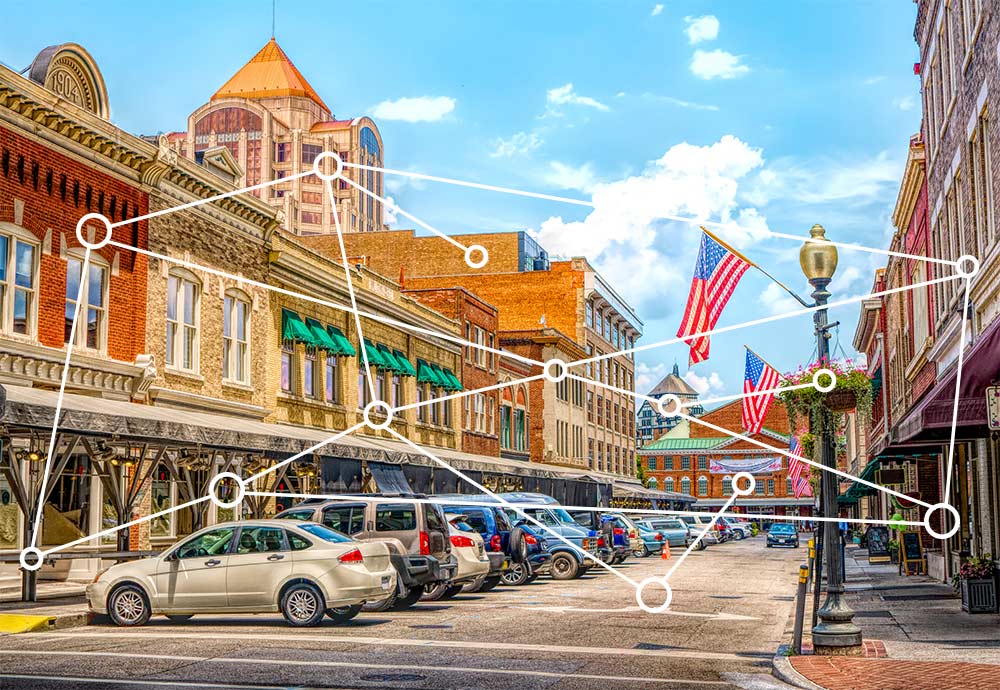- Navigator
- Downtown
- Entrepreneurship and Innovation
 As communities strive to foster economic growth and community vitalization, the importance of building strong entrepreneurial ecosystems has never been more apparent. While business incubators, accelerators, and entrepreneurial support organizations (ESOs) play key roles in these efforts, business improvement districts (BIDs) are emerging as critical partners in rooting these efforts in commercial corridors and downtowns.
As communities strive to foster economic growth and community vitalization, the importance of building strong entrepreneurial ecosystems has never been more apparent. While business incubators, accelerators, and entrepreneurial support organizations (ESOs) play key roles in these efforts, business improvement districts (BIDs) are emerging as critical partners in rooting these efforts in commercial corridors and downtowns.
We hypothesize that if main streets and commercial corridors actively join the startup ecosystem and collaborate with incubators, accelerators, and other business support organizations, the following outcomes could be achieved:
- Creation of local/neighborhood micro-clusters
- Positive impact on the local economy by way of job creation
- Enhance the narrative of downtown as an innovation hub
- Reduce commercial vacancy rates
- Foster economic inclusivity and equity through access to new opportunities and resources
Building Entrepreneurial Ecosystems: Learning from Natural Systems
When you think about a natural ecosystem, one of the most vivid examples is marine life. Underwater ecosystems have a natural flow and connectivity — the smallest plankton supports the largest whale, and every element plays a role in maintaining the system’s health. Similarly, successful economies rely on a wide range of participants, from grassroots entrepreneurs to established corporations, all working together to sustain the local economy.
The same system connectivity hasn’t traditionally been true of the business arena, and entrepreneurs (the plankton in our metaphor) haven’t always been viewed as integral components within economic development systems, which often focus on large businesses and institutions.
BIDs: Catalysts for Entrepreneurial Ecosystems
Economic development practitioners increasingly recognize the need for a more connective, sustainable, and collaborative approach to fostering growth, including a greater focus on entrepreneurship. Entrepreneurs, however, come in all stages — ideation, startup, growth, and beyond — and their needs vary greatly depending on where they are in their journey. Access to resources, physical space, mentorship, and capital can be key pain points. This is where BIDs, with their unique position in local communities, can make a significant impact.
Ecosystem building is essential for driving meaningful local economic growth, including business and workforce development. Entrepreneurs are often engaged in statewide or national programs and are innovating solutions to modern challenges. Yet, main streets and commercial downtowns are not always fully integrated into these entrepreneurial ecosystems. BIDs, as champions of downtown districts, can shape the vision and narrative of their neighborhoods. Their collaboration with incubators, accelerators, and other entities can amplify economic and workforce development at the grassroots level.
Case Study: S.T.E.A.M. Garden on Central Avenue, Albany, NY
The S.T.E.A.M. Garden on Central Avenue in Albany, NY, is one example of ecosystem building on main street. Albany’s Central Avenue is a gateway district to the city, yet it has seen disinvestment over the last several decades and continues to struggle economically.
Central Avenue is an underserved neighborhood whose businesses are often disconnected from the wider economy and often do not have the networks or resources to establish and grow their business venture.
To tackle this challenge, the Central Avenue BID set out to develop a space where local entrepreneurs could access resources, receive specialized attention and training, and generate economic activity from within the district.
To do this, the BID set out to redevelop a historic church into an incubator and co-working space. Known as the S.T.E.A.M. Garden, the BID aims to use it to further stabilize a neighborhood rich with small and minority-owned businesses, and spur job creation and tech transfer in Albany’s urban core.
The transformation of this property has been a catalyst for the continued revitalization of this dynamic corridor and, more broadly, establishes a significant new asset in the region’s support ecosystems for entrepreneurship, technological innovation, workforce training, cultural diversity, and the creative economy.
Opportunities for Commercial Corridors
BIDs have a unique opportunity to lead the charge in transforming main streets and commercial corridors into dynamic nodes within entrepreneurial ecosystems.
During the global COVID-19 pandemic main streets, commercial corridors, and downtowns faced unprecedented challenges. While some have been able to bounce back, others are still navigating the disruption. By integrating more closely with the economic development ecosystem — especially through strong local partnerships with ESOs, incubators, and accelerators — BIDs can accelerate resource access, foster entrepreneurship, and drive innovation in their communities. This collaboration can lead to the creation of more sustainable businesses, enhanced workforce development, and additional investment in the district, leading to reduced vacancy rates, increased foot traffic, and increased revenues for businesses within BID boundaries.
Moreover, BIDs can facilitate the development of micro-clusters at the neighborhood level. Aligning micro-clusters centered in local downtowns with regional industry clusters can create hyper-local economic impacts by encouraging businesses to set up their headquarters, employ local residents, and attract the attention of investors. This level of localized development can transform a struggling commercial corridor into a vibrant economic engine with regional significance.
How to Start Building Entrepreneurial Ecosystems
For those looking to support BIDs in playing a stronger role in entrepreneurial ecosystem building, here are key actions to consider:
- Collaborate with Economic Anchors: Strengthen relationships with economic development organizations, incubators, accelerators, universities, business service providers, etc., to ensure local entrepreneurs know of and have access to the resources they need at every step of their journey.
- Form a Main Street Action Team: Create a dedicated team that champions this effort and coordinates with regional economic development and workforce initiatives.
- Conduct a Corridor Asset Analysis: Understand the local assets within the district to identify what micro-cluster(s) could best align with the neighborhood’s strengths and regional efforts.
- Develop a Micro-Cluster Strategy: Considering local assets, design a targeted strategy to build, grow, and support micro-clusters.
- Physical Activation of Space: Improve connectivity, walkability, and the quality of public spaces to make the area more attractive to entrepreneurs, residents, and investors.
Conclusion
Ecosystem building is a method of building interconnectivity to amplify entrepreneurial impact. Main streets and/or BIDs are critical practitioners and ecosystem builders. The S.T.E.A.M. Garden on Central Avenue in Albany, NY, is a good case study of how a BID can serve as an anchor ecosystem builder that connects entrepreneurs to resources, stabilizes the community, and creates pathways for a stronger workforce.
As BIDs embrace their role as ecosystem builders, they will help drive innovation, inclusivity, and long-term economic sustainability that is grounded in the communities they serve.
This article is a collaboration between Tasemere Gathers, Founder of The DM Firm, and Christa O. Franzi, CEcD, Vice President and Director of Entrepreneurship at Camoin Associates.
📍 Related Articles and Project Profiles:
- Entrepreneurial Ecosystem and Economic Development in Cataraugus County, NY
- 7 Ways to Ignite Entrepreneurship-Led Economic Development in Your Community
- The Rise of Entrepreneurship-Led Economic Development Strategies
- 9 Reasons Why We All Need More Entrepreneurship in Our Lives (Infographic)
- Rhode Island Seeks to Improve Its BIPOC Small Business Ecosystem




